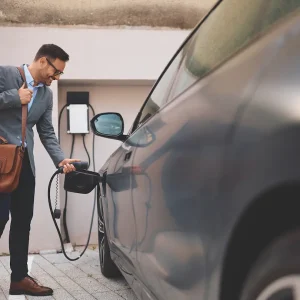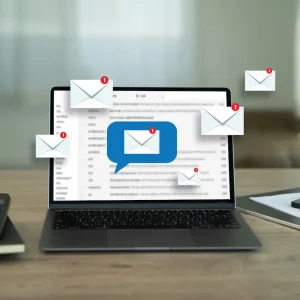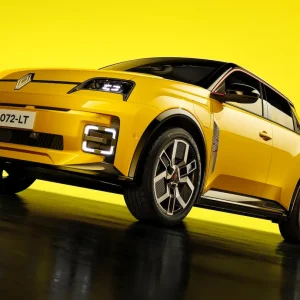Connected cars are not a new concept. From technology and apps such as Android Auto and Apple CarPlay, which sync a driver’s smartphone with the vehicle’s infotainment system, to driving features including lane-departure warning, automatic parking, diagnostic reporting, maintenance scheduling and mapping, all systems are developing at a rapid rate.
But advancing technology isn’t only about entertainment and convenience – safety is paramount. Human error continues to be the leading cause of collisions and injuries, attributable to an estimated 90% of crashes worldwide, and self-driving cars could largely eliminate this issue.
Bridging the gap
Until that day, however, there are potential hazards with this technology. Drivers should never assume that current connected car models, no matter how high-tech, can correct bad driving habits. Also, there is the danger of the driver overloading on information because there are too many systems going at once.
“The most vital aspect about these systems is ensuring that what they do does not add to the driver’s workload and cause distraction in the vehicle,” says Keith Bell, Fleet Services training and quality manager at RoSPA.
As technology becomes more advanced and complicated to engage with, there is an argument for fleet managers to ensure their drivers are familiar with it. RoSPA, as an organisation, believes drivers need to be fluent in interacting with vehicle technology, therefore putting the onus on the fleet manager to train them in using it.
“Fleet managers need to have a good appreciation of the new technology, and should consider the technology that would help to keep their drivers safe during their daily driving,” continues Bell. “The only way of ensuring drivers understand the new technology, and are capable of using the technology to keep themselves safe on the road, is through good training. The training should be client-centred and based around the driver, the technology fitted to their vehicle and the type of driving they do.”
“The increasing use of touchscreen technology means drivers have to take their eyes off the road to use the device, which is incredibly dangerous,” explains Simon Peevers, a spokesman for RAC Business.
One party responsible for ensuring that the systems are safe for drivers is, of course, the manufacturer.

Volvo’s Vision 2020 goal – that nobody should be killed or seriously injured in a new Volvo car by 2020 – forms the basis of the evolution of its IntelliSafe technologies.Steve Beattie, head of business sales at Volvo Car UK, tells BusinessCar, “Volvo prides itself on its reputation for developing the safest cars in the world. This is a basis for the development of our Sensus connectivity system.
“When driving, there are speed limitations on certain features and functions, meaning that some systems are not fully usable above a certain speed. Furthermore, when driving, the steering wheel and voice controls help the driver to interact safely with the car while not losing focus on the road.”
Beattie says that whether fleet managers carry out their own driver training is up to them; however, the manufacturer is currently investing in upgrading its retailers across the UK, and this includes the recruitment of a product specialist at each. “Their role is not to sell the car, but to give each customer an understanding of all its features, particularly technological,” explains Beattie. “We think this is a particularly beneficial development for fleet customers, and the role will only become more important as the cars become
more advanced.”
Driver overload
Tim Shallcross, head of technical policy and advice at IAM Roadsmart, explains that current HMI systems in cars should work to ensure that drivers aren’t overloaded. “Manufacturers try to make sure that it doesn’t happen,” he says. “That said, the driver can choose to be overloaded, and adding additional technology and systems into the car is often instructed by their
fleet manager.”
But it’s not simply a case of fleet managers saying no to the use of mobile phones in cars either, says Shallcross. “There are many campaigns at the moment such as ‘Put the Phone in the Glove Box’, but I don’t support that, as it’s not realistic and more people do use the sat-nav function on their phone while driving, as well as apps that judge how good their driving is.”
All fleet managers should have something in their company car policy which works to mitigate driver distraction via phones in cars, says Shallcross. “Manufacturers are also trying to make connected systems less distracting to operate from many points of view, in that you don’t have to look at a display to operate functions in the car, and those who insist on answering the phone on the move can do it more safely.”
Turn it off
And that’s where driver training comes in. “If companies are using a type of software for their drivers, whether it is route planning or anything of the sort, they should be giving their drivers some training in using it, and if they’re not already, then they really want to think about it,” says Shallcross.
But whether drivers should be able to turn the systems off is a recurring argument in the industry. “Yes, they should, but before they do it’s important to decide whether they have had the right level of training or have the company underestimated the amount of intrusion that the technology is causing? Everyone is different and just because one person can drive along with systems beeping everywhere doesn’t mean everyone can,” Shallcross says.

Bell explains that these systems are there to help mitigate the risk of driving and although some drivers may find them intrusive, this can be rectified through good training. “The option to turn the systems off should not be applied, as the fleet manager would not know when the system is on or off, and why it was turned off by the driver,” he says.
However, Peevers, when asked whether drivers should be able to turn systems off, says, “Absolutely, if a driver feels they are being distracted by systems in their vehicle, they should be able to turn it off.”
Beattie from Volvo agrees with this opinion. “Volvo undertakes a huge amount of research into how drivers interact with connected systems, and how these systems should behave in specific scenarios,” he says. “Drivers do have the option of turning off some systems, such as lane-keeping assist, which provides support to the driver, rather than performing a fundamental safety operation. The sensitivity of certain functions can also be adjusted.”
But the problems seem to occur when fleets opt for add-on systems, says Shallcross. “It’s difficult to resist because a whole industry is doing it. Supplied by the manufacturer, these systems are all integrated and tested, but industry specialists go and do something that doesn’t necessarily fit in well with all the vehicle systems. When looking at a new bit of software or service, it’s best for fleet managers to assess it with the different makes of cars they use and see if there are any problems.”
Prepare for take-off
Another argument that is often cited is whether drivers would be prepared to take over if the systems suddenly stop working or turn off.
“Through good training, the driver can be made aware of this issue and, once aware, can then take responsibility for ensuring they remain alert, even when using the new technology,” says Bell. “Fleet managers monitor how the driver’s behaviour is affected by new technology and are prepared to provide extra help
if necessary.”
“There has been concern that increasing levels of technology are lulling drivers into a false sense of security, and that in a sense the vehicle will deal with any sudden incidents,” says Peevers.
“This is more of a concern as automated vehicles start to become a reality, as drivers should be able to intervene if there is a problem and take control of the vehicle safely. All of us as drivers have to take responsibility when behind the wheel, and have to ensure we are engaged at all times with the task of driving the vehicle.”
Of course, connected technology such as telematics units have many safety benefits. “Those that are hard-wired into the vehicle can provide real benefits to fleets, as they can have a positive impact on driver behaviour,” says Peevers.
Coupled with driver training and awareness, telematics units have been proved to reduce the number of accidents and speeding incidents in fleets, as drivers are braking and accelerating less harshly, and sticking to the speed limit.
“This all has a huge impact on fuel use and general wear and tear, up to 20% in some cases, which brings down overall running costs for fleets. Improving MPG by 10% for one vehicle soon adds up across fleets of hundreds,”
Peevers explains.
Ultimately, driver safety should be integral to the development of the connected car and the industry has seen many new features introduced by manufacturers that are designed to improve safety and reduce the potential for an accident, Peevers explains. “We would expect that to continue, as manufacturers want to produce safer cars for their customer and use the latest technology in a positive way to achieve that,” he says.
With the advent of autonomous cars, it is assumed that drivers won’t be interacting at all with the car. “The more technology moves on, just like the smartphone, it becomes easier and more intuitive to operate,” says Shallcross. “You only have to look back at a previous generation of software on your phone to know it’s not as intuitive as what is available now; you have to tell it to do everything and enter everything in manually.”





